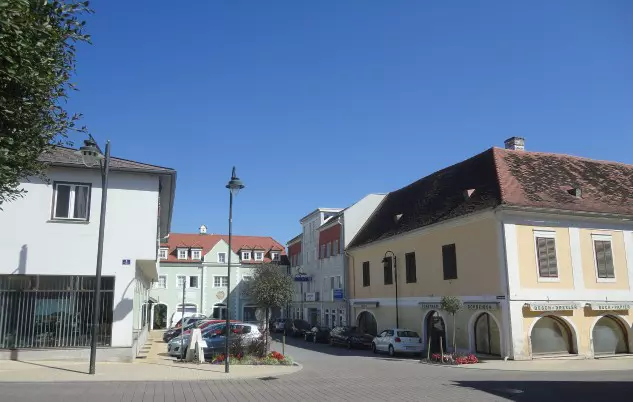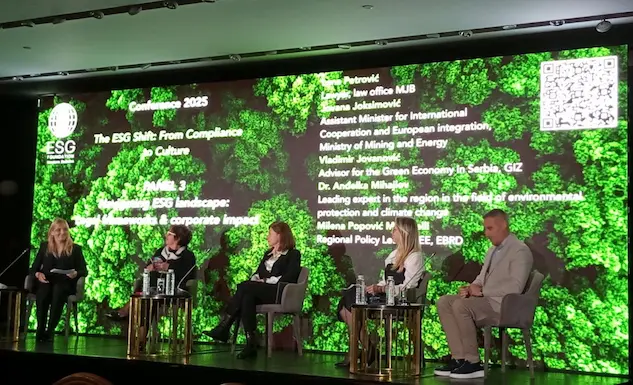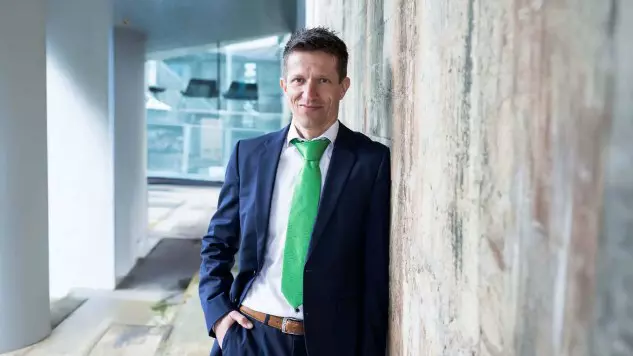In today’s urban and business environments, water is no longer just a utility—it is a strategic asset. As cities spread and industries grow, the pressures on water infrastructure have reached unprecedented levels. In parallel, the European Union’s Green Deal and Sustainable Development Goals are promoting transitions to circular economy (CE) models, which reframe wastewater not as a burden but as a valuable resource. Enter SmartWaterTwin project (Twinning for smart water- Thinking and rethinking wastewater management in circular economy frame, HORIZON-WIDERA-2021-ACCESS-02-01 – Twinning Western Balkans Special), a forward-thinking European project led by the University of Novi Sad, Faculty of Sciences (UNSPMF, Republic of Serbia), in collaboration with two top-tier research institutions: the Catalan Institute for Water Research (ICRA, Spain) and Université Paris-Est Créteil (UPEC, France). This twinning initiative offers an integrated response to the evolving needs of modern cities and industries alike, aiming to turn wastewater management into a driver of sustainability, innovation, and competitiveness in the Western Balkan region.
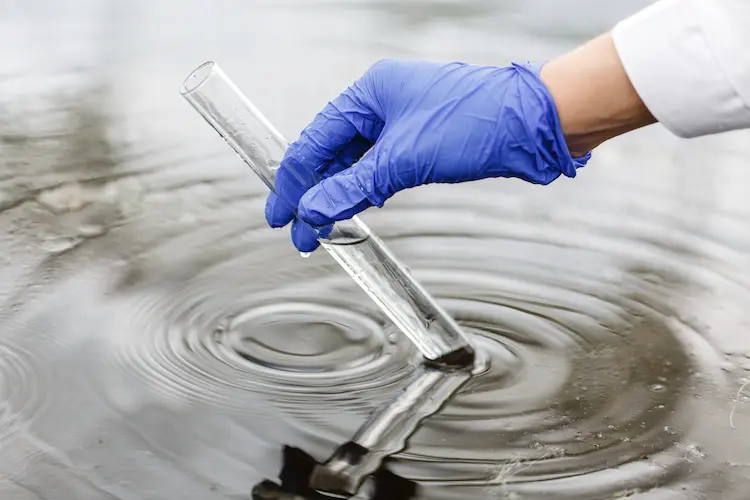
The challenge: Wastewater as a missed opportunity?
Water scarcity is no longer a distant threat. The World Economic Forum consistently ranks the water crisis among the top global risks. The Western Balkans, including Serbia, face a dual challenge: climate vulnerability and infrastructural underdevelopment. In Serbia, less than 15% of municipal wastewater is treated before discharge. At the same time, industries struggle with outdated wastewater practices that increase operational costs and environmental liabilities. For urban planners and business leaders, this represents not just a regulatory concern, but a missed opportunity to create value. Worldwide, conventional wastewater treatment plants are coming to the end of their lives and need to be restructured and modernised to respond to the mentioned environmental challenges. They are RETHINKING technologies and wastewater possibilities, putting it into a new perspective. On the other hand, Serbia is progressing very slowly in the wastewater sector in comparison to most EU countries. We can say that we are at the beginning in of this endeavour, and that there is almost a blank canvas to THINK and integrate developed countries’ decades-old experience, so we can save time and start building the wastewater treatment sector thoughtfully.
The vision: circular economy meets wastewater management
SmartWaterTwin aims to transform this challenge into an opportunity by applying circular economy principles to the wastewater sector. This means rethinking water systems as loops rather than lines—recovering energy, nutrients, and even materials from what was traditionally seen as a waste stream. With an emphasis on scalability, policy alignment, regulation needs, public-private collaboration, SmartWaterTwin is trying to create a replicable model for CE-based urban water management.
The project defines wastewater as a resource-rich flow that can feed back into cities and industries, whether through nutrient recovery for agriculture, energy capture for grid input, or reclaimed water for industrial reuse and urban landscaping.
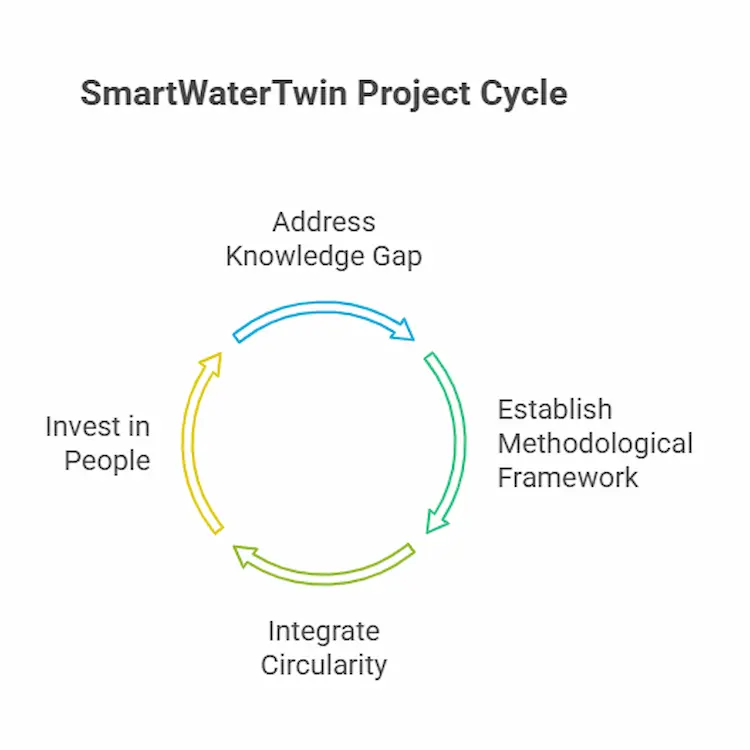
How it works: SmartWaterTwin in practice
SmartWaterTwin is built around four interlinked strategic pillars that reflect the realities and demands of business and urban development in the 21st century. Together, they chart a roadmap for how circular economy principles can be embedded into the wastewater sector—from research and policy to implementation and impact.
First, the project begins by addressing a core barrier in many developing and transitioning regions: the knowledge gap. Serbia’s wastewater research and practice have historically lagged due to limited international collaboration and access to cutting-edge expertise. SmartWaterTwin bridges this divide through intensive knowledge exchange with leading EU institutions. Researchers from the University of Novi Sad are embedded in training missions with partner institutions in Spain and France, gaining hands-on experience with advanced technologies and circular economy strategies. Simultaneously, expert visits and tailored capacity-building programs are helping elevate the university’s administrative and research support systems. This combined approach ensures that knowledge isn’t just absorbed—it’s institutionalized and diffused throughout the region, forming the backbone of a regional hub for innovation in sustainable water management.
Second, SmartWaterTwin focuses on establishing a comprehensive methodological framework for applying circular economy concepts to wastewater management in Serbia. This effort involves a blend of technical analysis and stakeholder engagement to identify the most viable circular pathways—whether through water reuse, energy recovery, or nutrient valorization. Recognizing that successful implementation relies on local relevance, the project has developed the “SmartWater Toolkit”—a practical assessment and planning instrument tailored for municipalities and industries. The toolkit is supported by policy-oriented factsheets and hands-on training workshops aimed at decision-makers and technical staff. These tools enable local actors to evaluate the potential of CE interventions and align infrastructure development with EU standards and environmental goals.
Third, the project introduces a dual perspective for integrating CE into infrastructure planning: “thinking” and “rethinking.” The “thinking” model embeds circularity from the earliest stages of wastewater treatment plant (WWTP) design, while the “rethinking” model retrofits or upgrades existing infrastructure to incorporate resource recovery features. This duality reflects the needs of both emerging economies and mature urban systems. To ground these ideas in practice, SmartWaterTwin is conducting a comparative study of circular water management strategies across Western Europe and the Western Balkans. Additionally, an industrial case study in Serbia’s food sector explores how nutrient-rich wastewater can be transformed into an asset, demonstrating that wastewater valorization is both technically feasible and economically attractive. Central to this effort is the SmartWater HUB, an open-access digital platform where urban planners, researchers, businesses, and policy-makers can share insights, access tools, and foster new collaborations.
Finally, SmartWaterTwin invests in people. Recognizing that long-term change requires a new generation of professionals equipped with forward-thinking skills, the project emphasizes the development of early-career researchers (ECRs). These young scientists are engaged in cross-border exchanges, intensive spring schools, and practical lab training sessions. They are also contributing directly to research outputs—authoring scientific papers, developing VR-based lab tutorials, and presenting at international conferences. This not only enhances their scientific profiles but ensures that Serbia and the wider Western Balkans are producing competitive talent in the global environmental innovation landscape.
Why it matters for business
For industries—particularly those in food production and manufacturing—wastewater is an overlooked cost centre. However, SmartWaterTwin demonstrates that it can become a source of savings and even new revenue streams. Nutrient recovery can yield fertilizers, heat recovery can cut energy bills, and water reuse can reduce regulatory burdens.
Furthermore, CE-aligned water practices increase corporate sustainability ratings, a growing factor in global market competitiveness and ESG compliance. Companies that adopt CE principles now are likely to lead tomorrow’s green economy.
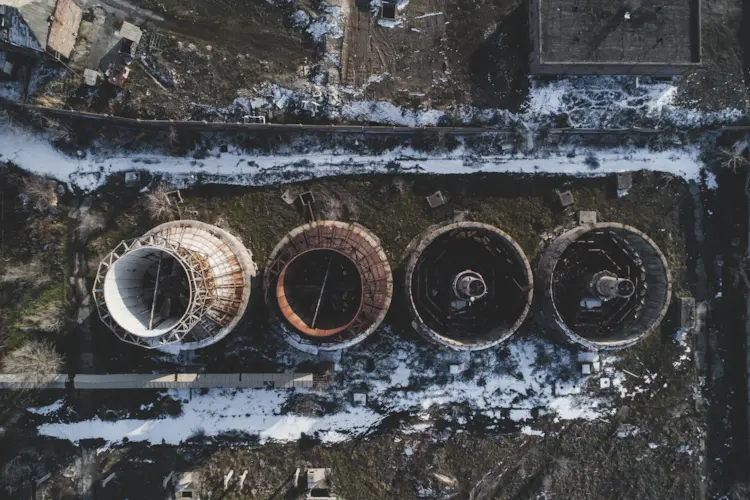
Innovation through partnership
SmartWaterTwin is more than a research project—it is a model of collaborative governance. By linking academia, industry, and policy stakeholders, it builds a bridge between knowledge and practice. Policy training modules help align Serbia’s regulatory landscape with EU water and CE directives.
Through its digital HUB, the project connects actors across borders and disciplines, fostering a shared ecosystem of knowledge. This kind of soft infrastructure is key to building resilient and adaptive water systems in the long term.
Policy relevance and strategic alignment
SmartWaterTwin aligns with multiple strategic frameworks:
- EU Green Deal & SDGs: Promoting circular water systems supports goals 6 (Clean Water), 12 (Responsible Consumption), and 13 (Climate Action).
- Western Balkans Green Agenda: SmartWaterTwin contributes to sustainable connectivity and resource efficiency targets.
- Serbia’s 4S Strategy: The project embodies green and digital transformation pathways in science and innovation.
Moreover, the project supports knowledge-based policy-making by producing a toolkit document and offering ready-to-use factsheets that guide infrastructure investment decisions.
Water is no longer just a public utility—it’s a platform for innovation, resilience, and sustainability. For business professionals, the SmartWaterTwin project offers tools for reducing operational costs while increasing ESG performance. For urban planners, it provides a roadmap to future-ready infrastructure.
The SmartWaterTwin platform is open, inclusive, and built for collaboration. We invite cities, companies, and communities to engage with us, through our HUB, at our future forums, and within our expanding network of partners. Because thinking and rethinking wastewater today means shaping sustainable cities tomorrow.
About the author: Djurdja Kerkez, Full professor, Faculty of Sciences, University of Novi Sad
You can read more about sustainable development issues in the Balkans here
